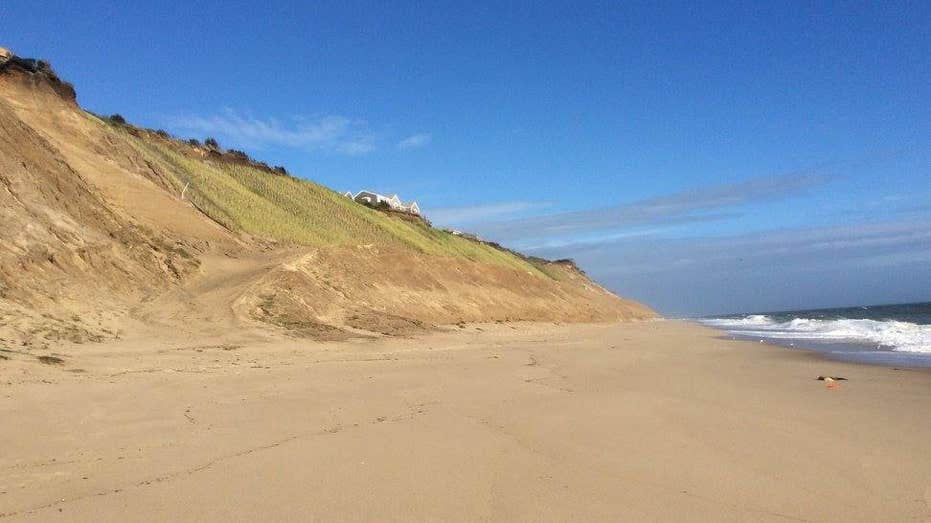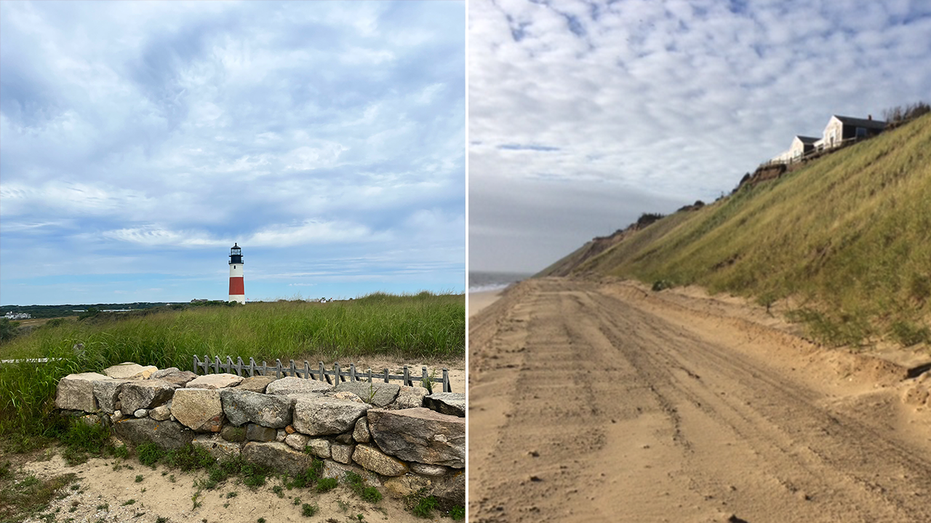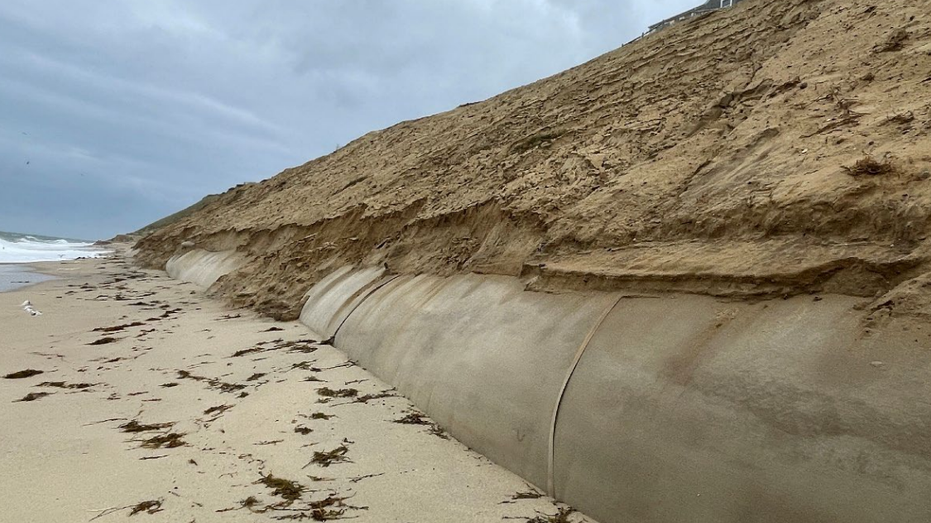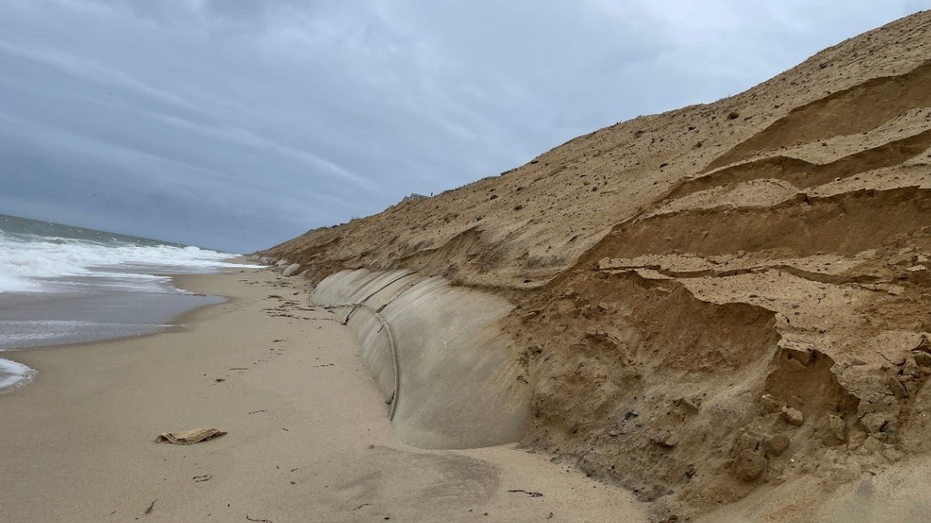Nantucket beachfront homes still coveted by buyers despite high risk of being swallowed by the sea
There may be trouble ahead, but some buyers still want the beach houses
America’s wealthiest appear to be playing the luck of the draw when it comes to purchasing and preserving beachfront homes on one of New England's most cherished islands.
On Nantucket, off the coast of Massachusetts, conservationists are cautioning locals that coastal erosion is strongly wearing down the island.
It's projected that by 2070, nearly 30 miles of roadway will be inundated by more than six inches of floodwater during regular high tides, according to the town’s Coastal Resilience Plan report released in 2021.
NANTUCKET BEACHFRONT HOME SELLS FOR AN ABSURDLY LOW PRICE, BUT THERE'S A CATCH
Many home buyers may not be heeding the call, however.
Bill Liddle, a partner at Great Point Properties on the island, said that for quite a few buyers, it is a dream come true to live on the coastline, and it depends on what area the buyers are looking for on the island.

The peak number of people on Nantucket during the busiest summer day has grown by about 50%, from roughly 40,000 people in 2014 to more than 60,000 people in 2021, according to the Nantucket Data Platform. (Siasconset Beach Preservation Fund / Fox News)
"They are willing to take on this risk [of purchasing a home] that your average individual wouldn’t in exchange for being on the water," he told Fox News Digital.
Coastal erosion differs in all parts of the country — but the process by which local sea levels rise, strong wave action and coastal flooding wear down the coastline may result in carrying away rocks, sand, soil and even structures.
"Memories will fade, then people are willing to feel more confident about taking a risk."
The report stated that over the next 50 years with sea-level rise, coastal flooding and erosion are expected to cause over $3.4 billion in cumulative damage across the island.
BILLIONAIRE FORCED TO DEMOLISH NANTUCKET BEACH HOME
Liddle said he believes "portions of some areas of the waterfront have always attracted wealthier buyers and less wealthier buyers are more mindful of the potential loss."
He said he's noticed a pattern in the market after episodic storms hit.
"People will pause and then several years will pass and memories will fade, then people are willing to feel more confident about taking a risk," he said.

Sankaty Light House, located in Siasconset, also known as Sconset, was moved in 2017 due to severe coastal erosion and now sits next to the fifth hole of the Sankaty Head Golf Course, 390 feet to the northwest and 250 feet from the bluff's edge. (Fox News)
Dr. Jen Karberg, senior wetland ecologist and director of research and partnerships at the Nantucket Conservation Foundation, said homes falling into the ocean is nothing new, but it is being seen at an accelerated rate now.
"We have people that are moving here and buying houses for cash that they know are going to fall into the ocean," Karberg told Fox News Digital.
Karberg researches coastal salt marshes, coastal dunes systems, methods on how to increase coastal resilience by using nature-based solutions and building up nature.
"A lot of the work that we are doing is figuring out how we can build a little more resiliency into our bluffs and dunes so that they can keep responding to those dynamic impacts of the storms that are coming, while protecting the upland areas," Karberg said.

On Nantucket, off the coast of Massachusetts, conservationists are cautioning locals that coastal erosion is strongly wearing down the island. (Siasconset Beach Preservation Fund / Fox News)
She said creating a dune system has proved to be an effective way to capture the moving sand and re-plant it. If eventually wiped away by a big storm, she knows one can be built up in two to three years, showing dynamic protection.
FLORIDA MANSION SELLS FOR MILLIONS AS THE HIGHEST-PRICED SALE EVER IN THIS SWANKY NEIGHBORHOOD
"Dune systems themselves are really protective to areas that are farther inland because they're what we call dynamic, because they're supposed to erode away and rebuild, and that sand is supposed to move."

On average, the Sconset Bluff has eroded 3–4 feet each year for the past 20 to 30 years. Recently, up to 30 feet has been lost from the bluff in isolated locations, reported the Siasonset Beach Preservation Fund. (Siasconset Beach Preservation Fund / Fox News)
The Sconset Bluff is the easternmost edge of Nantucket Island that was believed to be the terminus for the glacier in the last ice age.
Sometime after 23,000 years ago, the glacier reached its maximum advance, a position marked approximately by the islands of Nantucket and Martha's Vineyard.
STEVE JOBS' WIDOW GRABS $94 MILLION CALIFORNIA LOT
Josh Posner, Siasconset Beach Preservation fund president and longtime member of the fund, said "geotubes" have worked remarkably well in stopping future erosion of Sconset Bluff.

The Siasconset Beach Preservation Fund has supported placing "geotubes" on the coastline to prevent erosion. (Siasconset Beach Preservation Fund / Fox News)
"Geotubes are, in effect, very large sand-filled sausages made of polyethylene fabric ... They are staked like stadium seating at the toe of the bluff and then covered with a large volume of sand that matches the beach sand," said Posner.
"This system has worked remarkably well, stopping further erosion of the bluff."
CLICK HERE TO SIGN UP FOR OUR LIFESTYLE NEWSLETTER
"The system includes regularly adding sacrificial sand that washes away during large storms, mimicking the way the bluff erodes," he added.
"This is important because without adding sand, neighboring beaches might be starved of the sand they need to stay healthy."

Siasconset or "Sconset" beaches are a 7-mile drive from the town to the east end of the island. Geotubes set on the coastline are to prevent coastal erosion. (Siasconset Beach Preservation Fund / Fox News)
Posner said there have been some passionate opponents to the Siasconset Beach Preservation Fund projects.
"Our position is that what we are doing may not last forever, but it has proven itself to be extremely effective without doing harm to others, and is privately funded," he said.
Homes on Nantucket have faced drastic consequences.
GET FOX BUSINESS ON THE GO BY CLICKING HERE
Starwood Capital Group CEO, Barry Sternlicht, was forced to demolish his home that sat on a plot of land bordering the beach and Hummock Pond in April.
The billionaire was driven to raze his home, which was on steel girders, by severe erosion of the beach after several dozen feet of beach near it eroded in 2020 as a result of hurricanes in 2020, FOX Business reported.
DAVE PORTNOY'S $42 MILLION NANTUCKET HOME BREAKS RECORD
Some sellers have been challenged with drastically slashing beach home prices.
One seaside retreat originally hit the market at $2.295 million before incrementally lowering the price down nearly 74% to $600,000 despite losing 30 feet of dune, FOX Business reported.
Karberg said any town that has a coastline is dealing with the threat of coastal erosion.

Over the next 50 years, with sea level rise, coastal flooding and erosion are expected to cause over $3.4 billion in cumulative damage across the island, according to the town’s Coastal Resilience Plan report posted in 2021. (Siasconset Beach Preservation Fund / Fox News)
"Everyone's having some kind of impact," she said.
San Francisco is said to be one of several local cities sinking into the ground with residents in the Bay Area grappling with rising sea-levels, ABC7 reported.
For more Lifestyle articles, visit www.foxbusiness.com/lifestyle
"Rates of sea level rise, which lead to increased erosion, are faster in New England than they are anywhere else in the country. We are seeing intense and faster impacts. We're on a sandier coastline versus some of the rockier coastlines on the West Coast," said Karberg.





















